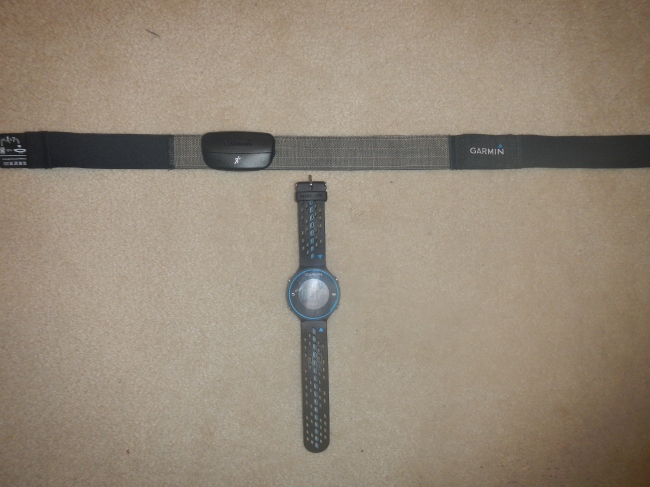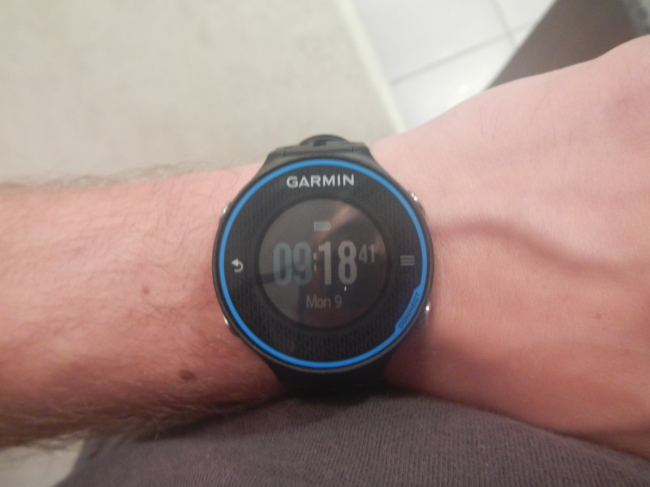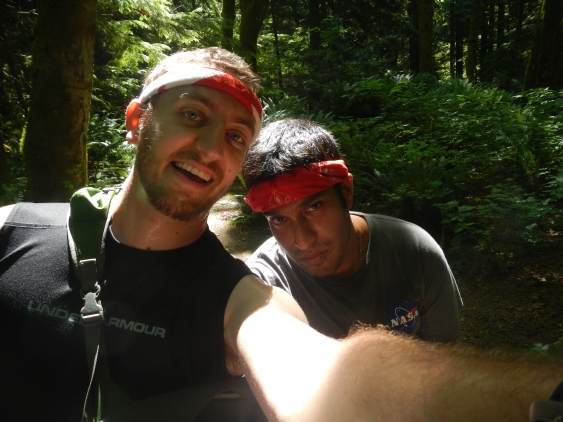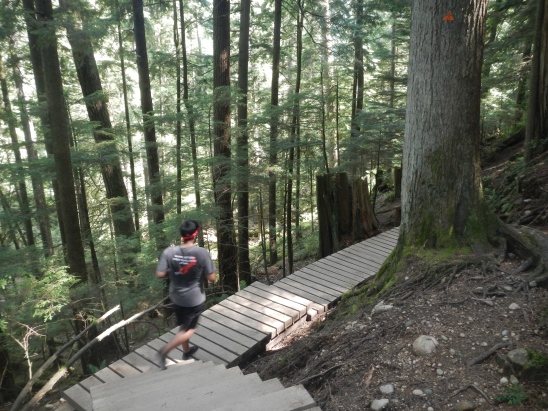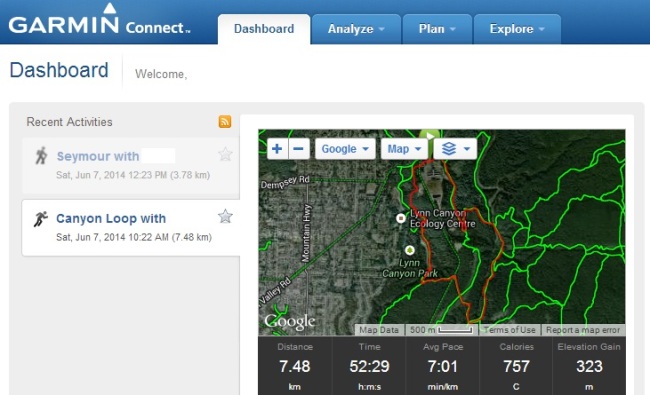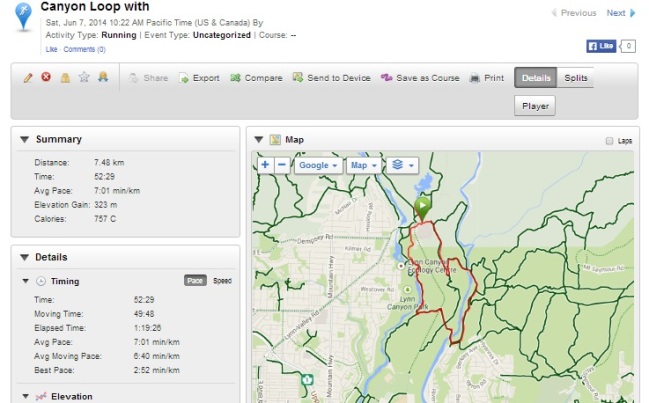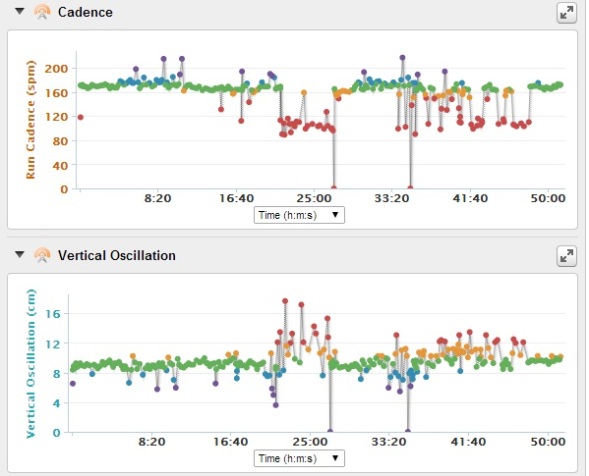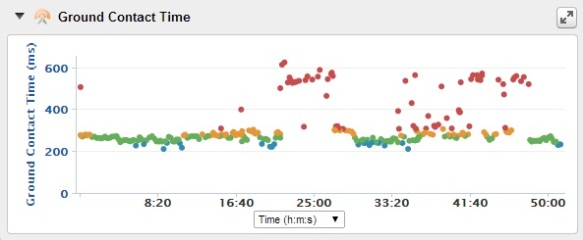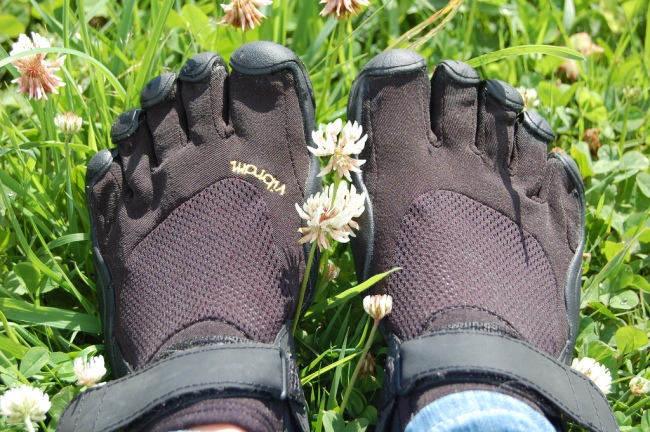
Photo by the witchery
One of the major downsides to having voiced an opinion about something strange is that people have a hard time forgetting what you said. That is especially true when the topic produces some kind of emotional reaction. Unfortunately for me, people have a strong emotional reaction to Vibram FiveFingers and I was one of the early adopters of the now infamous barefoot running shoes with an individual pocket for each toe. I’m not trying to be “that guy” who has to let everyone know he was onto something before it was cool, because FiveFingers are patently not cool. They are abrasively dorky in an age when nerd culture is mainstream, and that is really saying something.
I’m not exactly sure why people react so strongly to FiveFingers. I imagine it is a combination of 2 things. First, they don’t look like any other shoe you have ever seen so they stick in your mind like a misshapen piece of fruit or a memorably ugly baby. Second, when you see them you can’t help but imagine the feeling of fabric between your toes, and that sends most people running to the land of Nope. It’s a mix of jarring visuals and fear of new things, which any psychologist will tell you is a recipe for needlessly strong opinions.
That makes it difficult to be the guy who is on board with the weird newness. It is tiring enough to have to constantly explain to strangers in line at Subway what the deal with your shoes is, but it is a whole other bag of worms when the company that makes them publically settles a multi-million dollar lawsuit for false claims about their wares. Since Vibram’s class action settlement was announced last month, I have been linked to articles about it about half a dozen times. “What do you have to say for yourself, now?” is the general subtext.
That leads me to the other problem with having opinions: people frequently mistake a willingness to discuss your ideas with defensiveness. That has put me between a rock and a hard place on the FIveFingers fallout. On one hand, the law and science junky side of me wants to engage people in a discussion about the biomechanical pros and cons of barefoot running and the uniquely American tendency to sue everyone for everything; on the other, I know that the people sharing the links don’t actually care and just want to feel like they got me worked up. The upshot is I am forced to act nonchalant and stifle my eagerness for intelligent conversation… Until now.
Now that I have planted my flag on this small corner of the internet I can say what I want and organize my thoughts in a way that leads me to well-supported conclusions. It is the perfect situation for a guy whose high school days were split between the debate team and cross country practice.
Whenever I try to sort out my opinion about Vibram, I default to a few questions:
- Is there actual scientific evidence that minimalist shoes or “barefoot running” are better than conventional running shoes?
- Would a reasonable person with average levels of common sense be justified in suing them?
- Has buying their shoes had a net positive or net negative impact on my life?
The balance of this article will focus on answering those questions.
What does the science say?
Easily the most complicated of those three questions is what the science has to say about barefoot running in general and Vibram FiveFingers in particular. When you really dive into the academic research on the subject you are forced to balance articles that make exactly opposite claims about barefoot running before you finally find some line of reasonable information. Two quotes that really get to the root of the problem are:
- “Running barefoot offers no metabolic advantage over running in lightweight, cushioned shoes” – Franz, Corbyn, & Rodger, 2012
- “It was concluded that at 70 % of vVO 2 max pace, barefoot running is more economical than running shod, both overground and on a treadmill.” – Hanson et al., 2010
You’re really up against it when you try to research this. When the studies aren’t perfect mirror images of each other, they are often indecipherably jargon-laden:
“Significant variations in the forefoot adduction/abduction and rearfoot eversion/inversion coupling patterns could have little effect on the amount of tibial internal rotation excursion.” – Eslami et al., 2007
I could keep quoting ridiculous journal articles in a vain attempt to explain what is really going on in the literature, but it would take so long to define all the terms and explain all the research methods that if you actually sat down and read the whole summary your legs would have atrophied to the point of making the whole subject moot. Instead I’ll hit you with a bullet point list of the things that stood out to me:
- Barefoot running forces you to land further forward on your foot, to take shorter strides, and to land with your knees bent. This reduces stress and twisting in your joints. (Lieberman et al., 2010).
- Suddenly switching from running in conventional shoes to running in barefoot/minimalist shoes stresses parts of your body that aren’t used to it. You might get hurt if you try to skip a sensible transition period (Giulani et al., 2011; Ridge et al., 2013).
- Running in FiveFIngers allows you to react more quickly to changes in the surface you are running on because the thin soles allow your foot to more accurately sense slope variation (Squadrone, & Gallozzi, 2011).
- Choosing running shoes with different “cushioning technologies” based on the shape of your foot works in some cases (Butler, et al., 2006; Butler, Hamill, & Davis, 2013), but is totally pointless in others (Knapik, et al., 2009).
- Your body will unconsciously make changes to how you run no matter what kind of cushioning your shoes have. You will even change things up as your shoes get worn out (Clinghan, et al., 2009). So, generally speaking, paying attention to how you run is a lot more important than what you wear on your feet (Bootier, 2012).
- Minimalist shoes do allow runners to move in a similar way to those wearing no shoes at all (Lloyd, & Tong-Ching, 2013), but running in FiveFingers can reduce “vertical loading” (AKA impact stress) and reduce your risk of injury (Hutching, Maulder, & Burden, 2013).
(If you want to review the studies I’ve mentioned so far or other relevant ones that I haven’t cited specifically, please feel free to check out the links at the end of this article.)
To me, the conclusion that overshadows all the rest is that the technique you use to run is way more important that what you wear on your feet. Generally speaking shoes that mimic a barefoot, more natural running stride will nudge you in the right direction, but you need to use common sense and not overdo it right away.
My personal opinion is that, yes, you may be able to run totally safely in conventional running shoes, however I feel more stable when I am in more direct contact with the ground. Therefore, I will continue to run in my FiveFingers. If you are new to running, it will be easier to develop bad habits and harder to find the right patterns of movement if you encase your feet in foam. Different things work for different people, but that is my gut instinct after deep consideration.
Would a sensible person sue Vibram?
Frivolous lawsuits are a terrible thing. They waste taxpayer money and tie up the resources of the justice system. That being said, if someone has a legitimate complaint and was put in harm’s way by another person’s (or company’s) negligence, they are entitled to compensation. Sometimes lawsuits that seem like a waste of time are actually warranted. For example, the infamous case of the woman who sued McDonald’s after she burned herself while drinking their coffee was actually for the greater good of society and led them to adopt safer business practices. If you don’t believe me, check out the documentary Hot Coffee (It’s on Netflix).
So what about this Vibram lawsuit? In one corner we have a company that has provided me with a shoe I clearly enjoy. All cards on the table, I own 4 pairs of FiveFingers that I use for everything from canoe trips, to running, to walking around the mall with my girlfriend on a Sunday afternoon. In the other corner we have a group of people who feel they were duped by a large corporation. Vibram’s ads promised them improved strength in their foot muscles and fewer injuries. From where I stand, both sides deserve sympathy, but at the heart of the case is an issue I feel pretty strongly about. And it has nothing to do with running.
Critical thinking is an underutilized skill. Too many people go through life accepting what they are told at face value and not seeking out their own information. Clearly there is a problem if news networks or government organizations are spreading biased, one-sided information. However, marketing is an entirely different ball game. If you don’t expect to be told at least half-truths by companies that exist to make profits, then you are not making proper use of the squishy pink muscle you carry around in your skull.
No matter what an advertisement says, if you put on a shoe and expect to get a stronger foot without developing a sensible workout plan, you are asking for trouble. If you try to go from wearing pillowy Nike’s for your whole life to running 10K’s in what are essentially rubber foot-gloves, your injuries don’t fall far outside the realm of natural selection.
Lastly, no judge ruled that Vibram did anything wrong. They decided to settle the lawsuit to avoid a long drawn out process of bad press. I am not typically one to come to the defense of a multi-million dollar company, but condemning the scientific theory that is at the heart of barefoot running because a company decided to avoid negative publicity is naive to the point of foolishness.
That’s all I have to say about that.
Have the shoes helped me or hurt me?
There isn’t much mystery left leading into this section of the article so I will keep it short and simply share the story of how I came to running:
Growing up I always liked the idea of running. As a young Canadian watching Donovan Bailey win Olympic gold medals, I was inspired to chase my own glory. The trouble was, I was never all that great of a runner. I would do well enough at track and field meets at my own school but as soon as the competition got a bit more fierce, I was left in the dust. In high school I joined the cross country team thinking that if I couldn’t be fast, maybe I could outlast the competition. The trouble was, the more I ran the less I looked forward to it. Specifically, long runs hurt my knees; and after an unfortunate fall from a tall tree that has left me permanently susceptible to back pain, I had another reason to put marathon running on the back burner.
It wasn’t until I spent a winter in the Yukon working on a research project that I felt the need to try again. Spending a winter in a remote location, frequently snowed in and cut off from the world, I lost any residual fitness that I might have had. When I got back to my usual home I decided enough was enough. I had recently read about the benefits of barefoot running and had been wearing FiveFingers as water shoes for a couple years, so I threw caution to the wind and eased back into running. That was three years ago. Since then I have set countless personal records, rode the elusive wave of the runner’s high, and the only significant stretch of time I have not run was due to a plantar wart on my foot. I have not been injured in any significant way. My back pain even disappears if I stick to a regular schedule.
Regardless of what the people involved in the lawsuit think Vibram told them, the shoes have changed my life. I wouldn’t take my money back if they offered it.
So there it is, my extended rant about why I will continue to wear shoes that make me look like a doofus. Running shoes are a surprisingly complex and fascinating topic and the politics that are involved are almost as important as the technology. Obviously my perspective does not apply to everyone. All anyone can do is look at the evidence that is available, see how the options work for them, and try to make a reasonable decision. In the end, all that really matters is that we all keep moving and stay fit. With that I wish anyone who made it to the end of this post good luck and happy trails.
Cheers,
Steve
References and further reading:
http://bjsm.bmj.com/content/43/10/745.short
http://www.nature.com/nature/journal/v463/n7280/full/nature08723.html%3Fref%3Dnf
http://www.sciencedirect.com/science/article/pii/S1934148209013677
http://journals.lww.com/nsca-jscr/Abstract/2009/05000/Injury_Reduction_Effectiveness_of_Selecting.1.aspx
http://bjsportmed.com/content/42/3/189.abstract
http://ajs.sagepub.com/content/34/12/1998.short
http://www.sciencedirect.com/science/article/pii/S0966636206001937
http://www.therunningclinic.ca/medias/mailinglist/2010-hanson-o2-barefoot-vs-sho.pdf
http://europepmc.org/abstract/MED/21904278
http://journals.lww.com/acsm-csmr/Abstract/2012/09000/Barefoot_Running___Biomechanics_and_Implications.9.aspx
http://www.healio.com/orthopedics/journals/ortho/%7Bd2cb430b-2e12-4ba4-b255-78b5e4cddc63%7D/barefoot-simulating-footwear-associated-with-metatarsal-stress-injury-in-2-runners?full=1
http://unique-sportstime.de/site/wp-content/uploads/Barfuss-Laufen1.pdf
https://sonoma-dspace.calstate.edu/handle/10211.1/1512
http://vc.bridgew.edu/mahpls_fac/92/
http://www.ejss-journal.com/phocadownload/anno2013/supplement_to_volume_1june_2013.pdf




